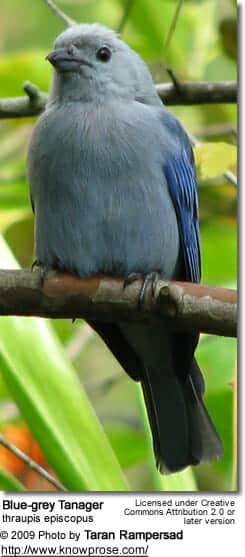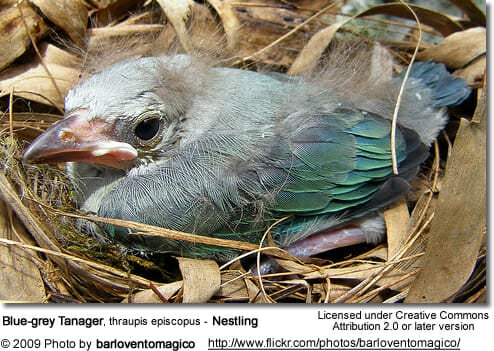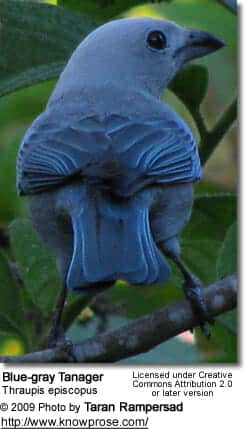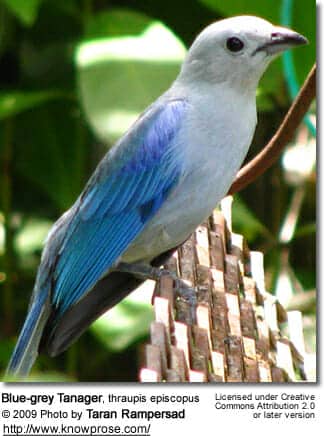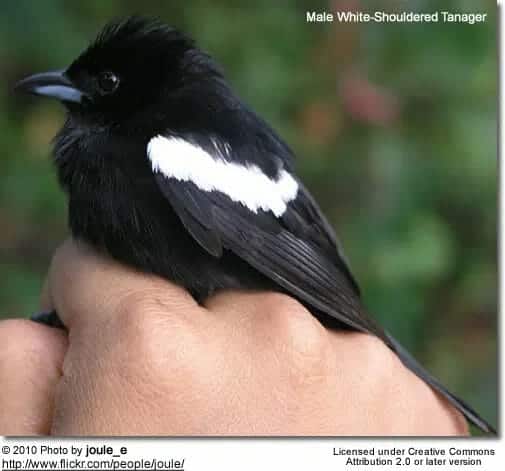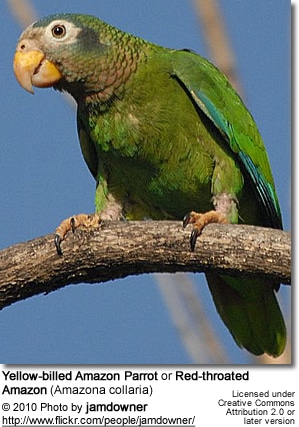Blue-gray Tanagers
The Blue-gray Tanagers (Thraupis episcopus) is a medium-sized South American songbird of the Tanager family, Thraupidae.
This is a common, restless, noisy, and confiding species, that is usually found in pairs but sometimes forages in small groups.
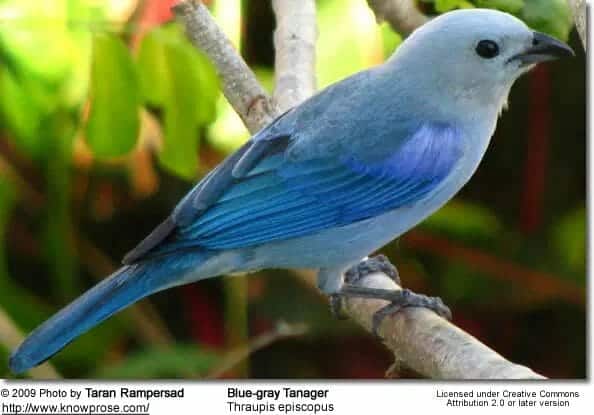
Description
The Blue-gray Tanagers measure about 18 cm in length and weigh about 35 g.
Adults have a pale blue-gray head and underparts, with darker blue upperparts. The bill is short and quite thick.
Males and females look alike, but the immature is much duller in plumage.
There are a number of races. T. e. berlepschi is endemic to Tobago and is a brighter and darker blue on the rump and shoulder.
Tanager Information … Tanager Species … Tanager Species Photo Gallery
Distribution / Habitat
It occurs naturally in Mexico south to northeast Bolivia and northern Brazil. It has been introduced to Lima, Peru.
The breeding habitat is open woodland, cultivated areas, and gardens. One to three, usually two, dark-marked whitish to grey-green eggs are laid in a deep cup nest in a high tree fork or building crevice.
Incubation by the female is 14 days with another 17 to fledging. The nest is sometimes parasitized by Molothrus cowbirds.
Diet / Feeding
The Blue-gray Tanager mostly feeds on fruit, but will also take some nectar and insects. It thrives around human habitation and will take some cultivated fruit like papaya.
Song / Call
The song is a squeaky twittering, interspersed with tseee and tsuup call notes. In Trinidad and Tobago, this bird is locally called the ‘Blue Jean’.
![Blue-grey tanagers [thraupis episcopus]](https://earthlife.net/wp-content/uploads/BluegreyTanagers.jpg)
![Blue-grey tanager [thraupis episcopus]](https://earthlife.net/wp-content/uploads/BluegrayTanager2.jpg)
